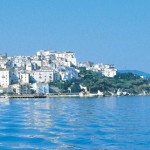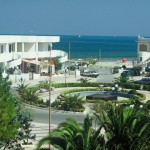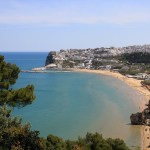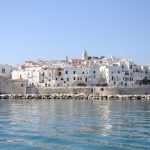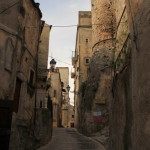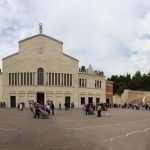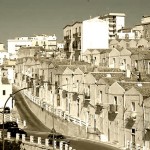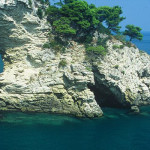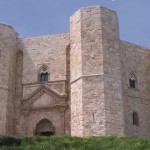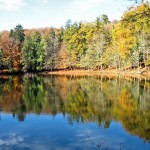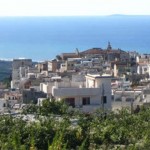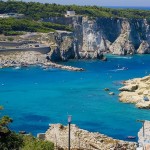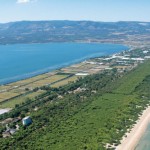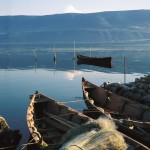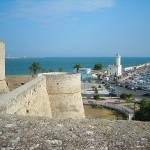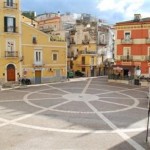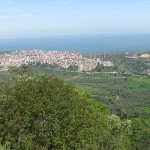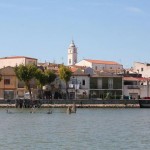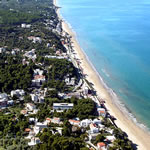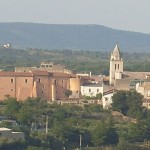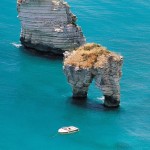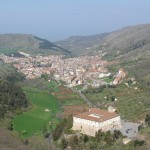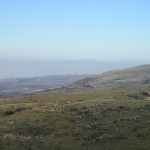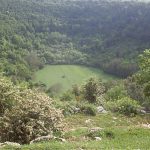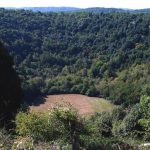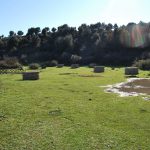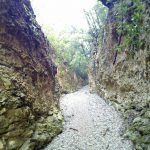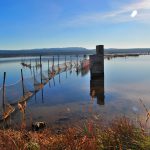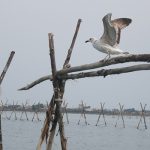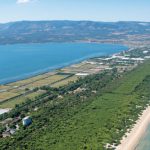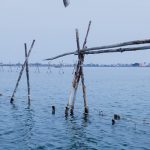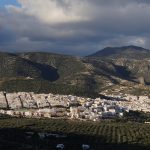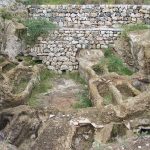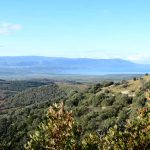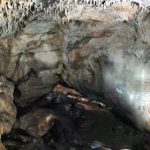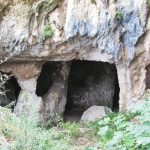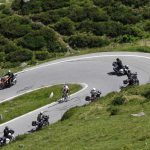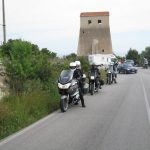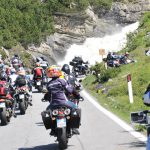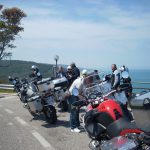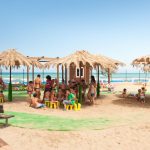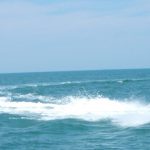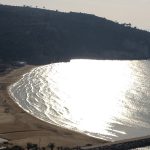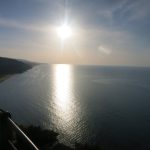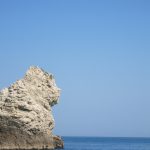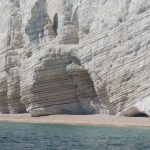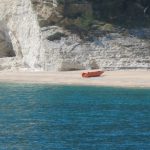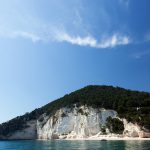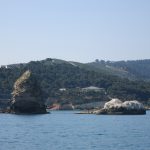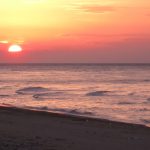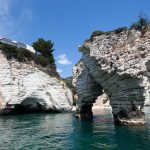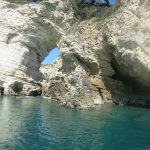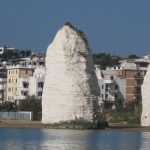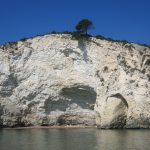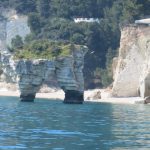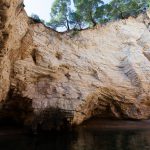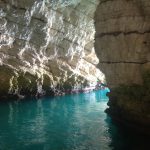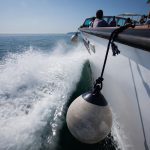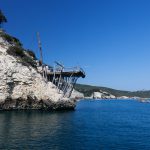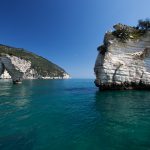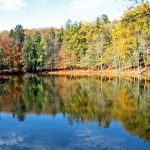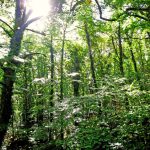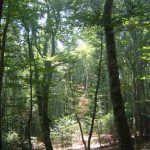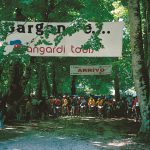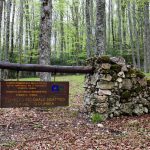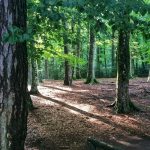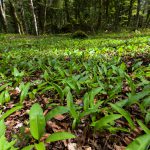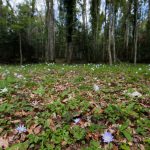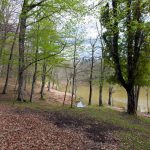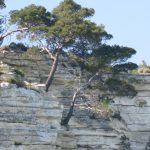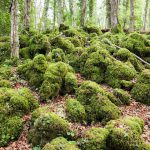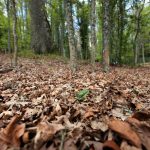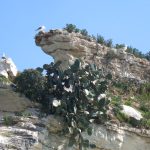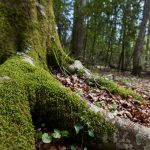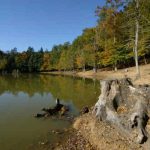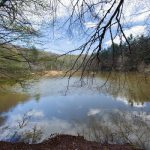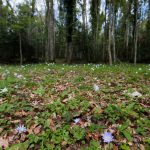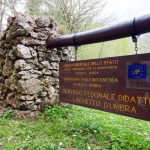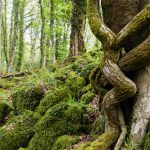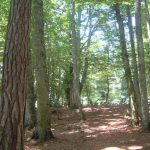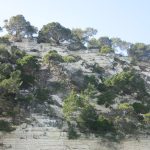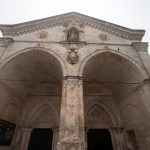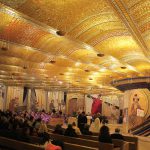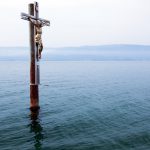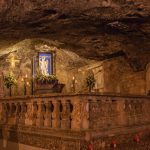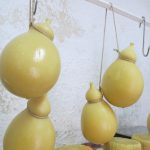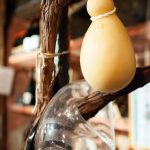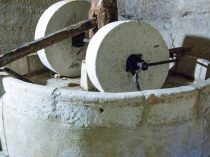
TRAVEL IN THE TRADITIONS OF THE GARGANO
Anyone visiting the Gargano for the first time notices it soon: The Gargano is a land deeply attached to their traditions. You can understand by the folkloristic events that bring back in life the dances and sounds ancient, from the sacred rituals that faithfully respect secular traditions, from the local handicraft tied to agricultural life and habits of the peasants, from the arts and knowledges handed down generation to generation. The best way for discovering this precious heritage is enter in the places where it is guarded and living the events that take place throughout the whole year.
It is located in the historic centre of Vico del Gargano and is converted from an old oil mill dating back to the 14th century where it was concentrated the olive oil production of the territory. Inside you can admire, in fact, the big millstone of local stone, the presses in wood, a reservoir for oil, a warehouse and a barn for the animals used in the machining process and other tools needed for the olive oil production and for the farm works. There is also the monacesca cuisine “a tutta camera” where who worked in the oil mill could rest for a short time. In the exhibition space also are kept intact and original many tools used in those times, including a barouche and very ancient objects of daily life. This place has witnessed over the centuries of the effort by many people which were working there and visit it means immersing yourself in a past still alive in the memories of the local people and jealously guarded.
It is a manifestation which is held in the first decade of August, born in the locality of Gargano for preserving the heritage of folk music. Since 10 years now the event livening up the summer with the traditional musics of the Gargano. At attracting the public are mainly I Cantori di Carpino which sing and play a musical repertoire among the most evocative and ancient of the Apulian territory.
The week before Easter is one of the most heartfelt recurrences in the Gargano. The apex of the religious celebrations is reached in the course of the Holy Friday, one of the most intense days and full of emotions of whole year. Every town, mixing tradition and faith, over the centuries has developed its own way of reliving the Passion of Christ. In San Marco in Lamis, for example, is held the suggestive Procession of the Fracchie, a ritual that dates back to the Middle Ages: the fracchie, giant torches realized with large tree trunks, come trailed by figurants in vintage outfit which illuminate per day the historic centre of town. Vico del Gargano instead celebrates the religious festival with the processions of the ancient brotherhoods and with the “Messa Pazza” (Mad Mass): during the liturgy are played ancient sounds and is intoned a canticle in Latin, poignant and melodious, for representing the upheaval that the death of Christ will bring on the Earth. In Holy Friday of Monte Sant’Angelo is held the secular function called “Ufficio delle tenebre” (Office of darkness), which comprises the ancient rituals of the “Miserere” and of the “Terremoto”, where the confreres they prostrate themselves on the ground and, at the turn off of a candle symbolizing the death of the Redeemer, they all produce a gloomy noise, striking the church pews, for reproducing the upheaval of the nature to the death of the Redeemer. Live these rituals will make you reach out and touch all the spirituality and the deep faith of the inhabitants of the Gargano.
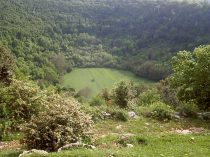
THE GARGANO SCULPTED BY KARSTIFICATION
The Gargano is a land of a thousand faces. Among them there is the less known, but very charming of the karstification, produced by the action of rainwater and carbon dioxide on the limestone rocks, that here has sculpted and drawn marvelous landscapes, both on the surface and in depth, witnesses of the geological history of Gargano. Among the most spectacular manifestations karst inland of Gargano there are the dolines of which in the Gargano there are over 4000. An excursion for admiring these works of the nature cannot miss during a holiday on the Gargano, also because two of these dolines are among the largest in Europe.
Situated in the territory of San Nicandro Garganico, with a perimeter of about 1.850 meters and a depth of more than 100, the doline Pozzantina is the second doline largest in Europe. Its circumference is covered by a rich vegetation, while at the center of the basin there is an artesian well. The emotion you feel in front this wonderful work of nature is indescribable! The doline is reached along the provincial road that connects San Nicandro Garganico to San Marco in Lamis until the 13th km. Here, on the right, you will find an asphalted narrow road that leads directly past the doline, in a higher position, from where begins the route for the descent.
A few kilometers from Rignano Garganico instead there is the third larger doline of Europe, the doline Centopozzi, so called for the countless wells created by man, once utilized as water cisterns and today partly buried. Faced with this imposing natural amphitheater you can only remain speechless! Starting from here wind their way interesting thematic routes present in the area of Rignano Garganico among which the Paglicci Cave, with its museum.
It is called so the path of the Romandato Torrent that develops along the bed of the ancient river, now dried up, in the territory of Ischitella. This torrent over the millennia has created, with its erosive force, a suggestive “canyon” along which you can admire an imposing vegetation, very rich in flint nodules, which assumes the characteristic shape “at gallery” and that barely leaves filtering the sunlight. Rich in sources of spring water, is a veritable treasure trove of biodiversity. For lovers of the nature is a route not to be missed.
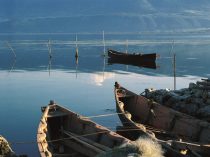
THE GREAT LAKES OF THE GARGANO
Not only sea and forests, but also fascinating lacustrine landscapes. In fact, there are also two lakes in the Gargano National Park and are the largest of southern Italy. They are the Lake Lesina and the Varano Lake, located on the northern coast of the Gargano. Both are actually lagoons, communicating with the Adriatic Sea through of the canals, and both are separated by the sea by a sandy and wooded land stripe. Not to be missed the naturalistic environment that you will be able to discover with an excursion to the Varano Lake and to the Lake Lesina, by boat, by bike or just walking.
It is located between the promontory of Monte D’Elio and the hinterland of Rodi Garganico and, with its extension of 60,5 square kilometers, is recognized like the greatest lake of southern Italy. In reality it is a lagoon communicating with the sea through two canals. It is divided from the sea by a strip of land formed from detritus carried by sea currents and by winds after the year 1000. On this strip of land, called Island, long approximately 10 km and wide 1 km, is present the State Nature Reserve of Varano Island, that occupying a large area within the Gargano National Park. On the other sides instead is characterized by hills that slope towards the lagoon. There are various ways in order to discover the beauties of the lagoon: from the bike to the kayak until to the canoe and to the traditional boats, called “sandali”. The trekking will be also pleasant to practice, while the birdwatching is best done in spring and in summer. Besides the multitude of species of birds and the rich vegetation present in lagoon, near the area you can visit the Chiesa della Santissima Annunziata (Church of the Holiest Annunciation) situated on the bank oriental of the lagoon and caretaker of the precious Crocifisso di Varano (Crucifix of Varano). The inhabitants of Ischitella and surroundings are very devoted to this wooden statue of 1300, ever since it was carried in procession on April 23 of 1717 and would have resulted the end of a long period of drought. It is also recommended to cross, along the coasts of the lagoon, the Sentiero dei Pannoni (Pannoni pathway), ancient shelters of fishermen, built in the friable rock, which still today present the signs of ancient fishing tools. Along the pathway you will reach even to the freshwater springs, that allow to the lake of being brackish.
Like the Lake of Varano, is actually a lagoon connected to the sea through two canals and is separated from the sea by a thin and long strip of land, this time called Bosco Isola. Here lies the Natural Reserve of Lake Lesina, a protected area, of 930 hectares, as animal restocking area and integral part of the Gargano National Park. Here you will find very rare animals that inhabit the Woods and circulate freely. The lake waters are rich in fish and populated by silversides, gray mullet, shrimp, sea bream, sea bass and eels, these last in particular are very abundant and represent an important source of income for the local people. In addition to fishing, another activity that goes practiced in the area is the birdwatching: numerous are the species of birds that nest here and you can observe them, including rosy gulls, flamingos, kingfisher and marsh harriers. To be seen the Visitor Center in Lesina in which is guarded the first aquarium in Europe containing brackish water, with 14 fish tanks, abode of the fish species typical of the lagoon. Here you can also admire the naturalistic museum section, dedicated to the biological riches of the territory, with the lagoon, the Bosco Isola and the sea. For discovering the rich biodiversity of this place it recommends a visit by boat and an excursion in the nature reserve of Isola di Lesina, the Bosco Isola, pristine example of Mediterranean Maquis.
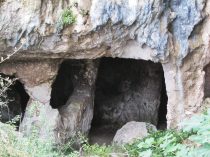
ON THE TRAILS OF THE PAST: THE HISTORY OF THE GARGANO
If you are passionate about history and archaeological excursions, in the Gargano you will find bread for your teeth. The Gargano in the course of the centuries has been a crossing place for many civilizations, each of which has left your own mark. This is testified by the many artifacts found in the area: Paleolithic settlements, necropolises and archaeological sites not entirely unexplored and which have already attracted researchers and enthusiasts from around the world. Here are the places to visit absolutely.
Internationally renowned, the site of Grotta Paglicci is considered one of the archaeological places most important than all Italy. According to the studies, in fact, this cave dating back to the Paleolithic one accommodated the Homo Sapiens Sapiens, called also Man of Cro-Magnon. This place is a veritable national historical treasure, one of the few and very rare sites in Italy where she was discovered the primitive rock art. They were found, in fact, three parietal paintings, realized with the red ochre depicting 3 horses, of which two small and one large that is slowly disappearing. Not only. Al its inside, and in the outskirts, were found beyond 45.000 finds of the Paleolithic Lower, Middle and Upper, through which it is possible to travel over again the three historical phases on the promontory. Among these are handprints, graffiti, lithic instruments, objects of mobiliary art and even the skeletons of two young inhabitants of the shelter, dating back to about 25.000 years ago and 23.000 years ago. You will cannot entering directly into the cave, that is only open during excavation campaigns, but you can visit the museum, located in corso Giannone 10, where is kept the treasure discovered over many years of excavations. The historical richness of this place does overshadowing even the fabulous landscape that can be admired from here: It extends from the Rocky Mountains to the pastures and to the olive groves.
Situated to 7 km from Vieste, on an area of 6000 square meters, this site, that it takes its name from a brook that runs through it, includes an important Paleochristian necropolis of the III-IV century AD, consisting of over 300 graves carved inside natural caves. Considered the largest and most impressive necropolis of the entire Mediterranean basin and the most ancient testimony of the arrival of Christianity on the Gargano, you will be impressed by the charm of this place where archeology, history and nature merge, immersed in a perfumed Mediterranean maquis.
In locality “Civita”, on flanks Monte Civita, on the side south of the inhabited center of Ischitella, was found an area, that has been already frequented in prehistoric age, where is visible an immense necropolis dated to the V-VI century BC with graves defined at “haversack”. In these graves, from the maximum length that goes from the 100 to the 140 cm approximately, the corpse could be placed only in a “fetal” position. According to studies performed, the finding makes to think to a presence of Samnites and, even though with caution, at the presence of Etruscan warriors. Outside by the graves they found some weapons, a reason for which believing that the same weapons were a spoils of war. Inside a grave has been also found a funeral equipment formed by fibulas, necklaces, ambers, ceramics, a sign of cultural relations with the other side of the Adriatic. Very evocative also the panorama that you will be able to admire from the top of the hill.
In this area, located about 4 km from the town of Mattinata and frequented since the Bronze Age, there is a vast necropolis constituted since more than 500 graves scattered on the mount and dug into the rock that shows the presence of the civilization of the Daunians. In these graves, that evoke the ritual of the returning to prenatal life, the deceased were placed huddled with the objects most dear to them. Originally they were to be closed by large stone slabs. The mount overlooks on the blue sea of Mattinata, thereby offering a breathtaking landscape to anyone which decides to go on its summit.
Situated on the east side of the Baia di Manaccora (Manaccora Bay), the Grottone di Manaccora is a natural cavity in which it was detected the presence of a human nucleus dating among the XII and the XI century BC with relevant archaeological evidence dating back to the Bronze Age. From the finds have been documented activities linked to both the weaving and the spinning that at the milk processing and derived products to. Documented also the practical of the metallurgy, testified from recovery of specific tools for the fusion. On the walls and bottom of the cave are visible hypogeic structures linked to propitiatory rituals and sometimes used for funerary purpose. On the Punta di Manaccora there is then a settlement composed of 66 huts of the same era, of which they remain the holes for the housing of the poles and the perimeter canals.
Located on a small promontory between San Menaio and Peschici, near the railway station “Peschici-Calenella”, it is a complex of Paleochristian hypogea, consisting of over 800 burials and burial niches surmounted by arcosolia, dating from between the fourth and seventh century AD. Of particular interest the cavity called the “hundred columns”, in which there are pit graves obtained at the foot of the columns and graves canopy. The site of considerable historical and archaeological importance, also offers an exceptional panorama on the stunning Baia di Calenella (Calenella Bay).
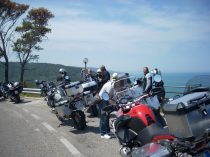
DISCOVER THE GARGANO RIDING THE MOTORBIKE
If you are lovers of motorbikes, you can live really exciting experiences on the Gargano: roads running through the most diverse landscapes, from sea to mountain, adventurous switchbacks that follow one another between beaches and woods, and breathtaking views that open around every bend.
You will choose to travel the roads of the seaside, with the freedom to stop for admire the wonders of the coast, the faraglioni, the trabucchi and the tourist harbours or venture out through the switchbacks of the mountain surrounded by the green of the Foresta Umbra, enjoying the flora and fauna of the Gargano National Park. Check out the tourist packages thought by Gargano Ok for motorbike lovers.

DISCOVERING THE GARGANO BY BIKE
The Gargano and the bicycle form a winning combination. This land, in fact, seems made for those which love to discover the territory by bike, slowly, trail to trail, with the opportunity to enjoy, at pedal strokes, the coastal passages, the enchanted woods and places that tell the story of this land.
With Gargano Ok can be programmed routes by bike to suit all needs, along streets bordering the sea through beautiful towns such as Vieste or Rodi Garganico, or stopping for a break relaxing on the beach. You cycle along nature trails surrounded by ancient olive trees or still along the Varano Lake or the Lake Lesina.
Or still you can reach the hinterland, sometimes rugged and hilly, for enjoying from there an unmissable view on the vastness of the sea. Crossing the Gargano by bike, every day you will experience a different journey.
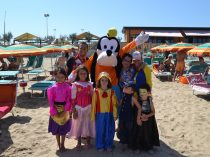
IN HOLIDAY ON GARGANO WITH CHILDREN
Are you planning a holiday with children? The beaches of Gargano, in Apulia, are ideal for children: They are large enough for allowing the children to turn in freedom, with soft sand, perfect for building castles, and with seabed low for playing in water in total safety.
For making the Gargano a perfect destination for a stay with the family there are however also the many specialized structures for little guests such as those of the Consorzio Gargano Ok. The hotels, the residence, the camping, the villages and the farm holidays are equipped to ensure the maximum comfort to the families, offering services as a babysitter with knowledgeable staff, miniclub, animation, sport lessons for children, special menus for the children and even the pediatric assistance. These services are all paired with packages ad hoc, with very advantageous prices for families. In addition to these, there are the healthy food, the clean air and the many activities to be practiced in the open air with the children.
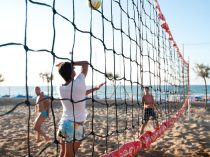
A HOLIDAY FULL OF SPORT ON THE GARGANO
There are many ways to be able to spend your free time during the holidays in Gargano. You can start by practicing sport activities recreational and healthy: many receptive structures of Gargano Ok are equipped with swimming pools, tennis courts and football fields, gyms and skating rinks, volleyball fields and basketball fields. Courses of Surf and Kitesurf are organized instead for those who want to try the thrill of practice sports among the waves of the sea of Gargano.
For lovers of the trekking, in the accommodation facilities of the Consorzio Gargano Ok not missing the opportunity to organize walks for keep in shape by following trails for Trekking and excursions in Mountain Bike in the woods of the Foresta Umbra or along the hairpin curves and straights that characterize the promontory of Gargano.
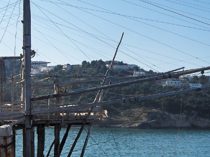
A SEA OF WONDERS IN THE GARGANO
Do you dream a seaside holiday? Well, on the Gargano you have 170 km of coastline, to which should be added about 50 km of the Tremiti Islands, for a total of 220 km of coast able to alternate steep cliffs to stretches of beaches of sand or of white pebbles, faraglioni and caves, all lapped by a crystal clear sea surrounded by Mediterranean maquis. Arm yourself with camera because you will capture photographs of breathtaking sceneries.
Don’t leave the Gargano without having first done a boat excursion along its coast, where you will find one of the most precious treasures of this territory: the sea caves. Dug over the centuries from the sea and the wind, haunt of pirates and corsairs in past times, each of them is distinguished for something unique. Baptized by the ancient fishermen with the names more bizarre, according to their form, their colors or to the legends to which they are linked, they are very many in the stretch of coast between Peschici, Vieste and Mattinata: Due Occhi Cave (Two Eyes Cave), Pomodori Cave (Tomatoes Cave), Contrabbandieri Cave (Smugglers Cave), Sfondata Cave (Broken Cave), just to name a few. An inimitable spectacle of the nature, difficult to describe in words. During the excursion you will also see the famous faraglioni of Baia delle Zagare (Zagare Bay) and the suggestive Architiello di San Felice, that have become by now two of the symbol images of the Gargano in the world. The tour departs every day, from 1 April to 31 October, from the Vieste harbour on board the comfortable motorboat Desirèe. You will can also pair a visit of the Sea Caves with a grilled in the splendid Baia di Porto Greco (Porto Greco Bay). An experience to do absolutely.
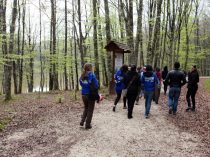
TREKKING IN THE NATURE OF THE GARGANO
If you are lovers of the holidays dipped in the nature, in the Gargano you have the embarrassment of the choice. The Gargano National Park, with approximately 120.000 hectares of biodiversity, possesses naturalistic landscapes that make envy. Driving along these itineraries you’ll find yourself stroll among enchanted woods, majestic forests with the seculars trees or along the footpaths of the wonderful native orchids. Open your eyes wide because you are going to discover landscapes of immeasurable beauty.
If you do not want to get lost null the nature of the Gargano, it is worth it to dip itself in the Bosco Quarto. Extended on a surface of approximately 8 thousand hectares, it is situated between Monte Sant’Angelo and San Giovanni Rotondo and, along with the Foresta Umbra, is considered the green lung of the Apulia. The landscape, in fact, is very similar to that of the nearby forest, but actually it is very different. They are different for the typicity of the flora of Bosco Quarto: even though, in fact, it is rich of beeches, here the dominant species is the Turkey oak. And that Turkey oaks! It comes to very ancient specimens of colossal Turkey oaks, with heights that arrive until 30-35 meters, to the point that the present maple trees appear as seedlings modest. This is the expression of the famous characteristic of the “gigantism”, peculiarities of Bosco Quarto. In addition, the trees most ancient are distinguished by the yellow and red fissures that color the cortex, rendering the landscape even more fascinating. Regarding the fauna, here find themselves foxes, wild boars and yews, but also numerous species of birds that find shelter between the thick nets of the tree branches. If you want to practice trekking in the Bosco Quarto, there are of the equipped trails, also of historical relief, that will take you along the ancient cattle tracks of Gargano.
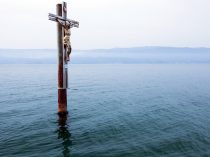
GARGANO, LAND OF FAITH
For those which in holiday they are attracted by the destinations of the faith or itineraries of the spirit, on the Gargano they will discover sacred places that they deserve of being visited independently from own religious confession. Traversed for centuries from the Via Sacra Langobardorum, traveled by the Crusaders to get to in the Holy Land, the Gargano is from always considered the sacred Mountain.
This is demonstrated by the large Sanctuaries of St. Michael the Archangel in Monte Sant’Angelo and St. Pio in San Giovanni Rotondo, that each year are visited by hundreds of thousands of pilgrims, but also the many rural churches, abbeys, crypts and cathedrals of high artistic level. Here’s a list of some places where to make stage absolutely for discovering the most mystical and spiritual side of Gargano.
Realized in the cave where between 490 and 493 AD occurred the apparitions of the Archangel, it is one of the most ancient places than cult of the Christendom. Since then, in fact, it developed the micaelico cult that invaded all the western world. The Lombards were particularly devout to the St. Michael the Archangel and diffusers of its cult in all Europe, to the extent that Monte Sant’Angelo became their “national sanctuary”, conferring to the historical “Via Sacra Langobardorum “, itinerary of medieval pilgrimage that went from Mont Saint Michel in France to the Sanctuary of St. Michael the Archangel, a singular opening to the most various Italian and foreign populations. In the course of the centuries the sanctuary has seen to pass illustrious pilgrims, popes, saints and monarchs. Famous the pilgrimage of St. Francis of Assisi, which arrived in 1216, he left imprinted his imprint in the grotto of the apparitions. This sanctuary was also the destination of all the Crusaders which, before leaving for the Holy Land, they came to entrust their soul to the Archangel Michael, patron saint of the warriors.
The most frequented religious destination of Gargano today is definitely San Giovanni Rotondo. Here, in fact, it is venerated St. Pio of Pietrelcina, well-known to most as Padre Pio, which lived and died in the convent of Santa Maria delle Grazie. The saint, known because as Jesus and St. Francis has received the gift of the stigmata and for having promoted the “Casa Sollievo della Sofferenza”, hospital-forefront for scientific research, attracts every day thousands of the faithful which go to pray at his grave, but also they visit his cell, his letters, his religious vestments, as well as the large modern church dedicated to him (designed by Renzo Piano for hosting the continuous flow of pilgrims) where today his mortal remains are guarded.
Another place of elevated spirituality of the Gargano is the Abbey of Santa Maria di Pulsano. It is situated about 8 kilometers from the centre of Monte Sant’Angelo, along the distance of the Via Francigena that joined the centres of the Tavoliere to the place of cult of Gargano, and was founded in 1129 from St. Giovanni Salcione from Matera on the remainders of the ancient convent of St. Gregorio in Pulsano. This Abbey knew a great flowering during the XII century, becoming even one of the most powerful monasteries of Southern Italy. Currently the Abbey has been restored and entrusted to the Benedictine Monks of the Pulsanense order. Near the Abbey are located the Hermitages of Pulsano, one of the religious manifestations stronger of monasticism on the Gargano of centuries past. The hermitages, which were used as dwellings from monks and hermits, from the times of Daunians until the modern age, are located on impervious cliffs and hardly accessible places, except by means of ladders or ropes. The silence and mystery that surround these monasteries are opposed to the wealth of historical events that have characterized the nearby abbey. Elected in 2010 to the first position of the ranking FAI “The places of the heart”, the hermitages are places of excellence in which to plunge in the spirituality and meditation, merging with the charm of nature of the Gargano.
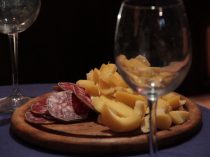
THE TRUE FLAVOURS OF THE GARGANO
For knowing until at the bottom a place, you know, you have to try its typical flavours. And if we talk about Apulia, there is no “de gustibus” which takes: its cuisine is renowned worldwide. One example is the gastronomy of Gargano that, for those which appreciate good food, has become one of the top reasons to choose a holiday in Gargano. Its cuisine, in fact, will also be poor from origin, because it is based on simple and genuine ingredients, but is rich in taste and recipes ranging from sea to land. For this the Gargano is the ideal starting point for undertaking food and wine tours really unique, to discover flavours and knowledge to which this land is deeply linked.
In Apulia there are 19 Slow Food Presidia and 5 are in Gargano. Among these are the citrus fruits of the Gargano, appreciated all over the world to the organoleptic qualities and for the delicate flavour; the caciocavallo podolico, obtained from the milk of the precious Podolica cows and produced according to the techniques and traditions of once; the Carpino’s broad bean that is renowned for its high protein content and for the delicious flavour linked to bioclimatic factors of the territory; the Podolica cow, the valuable breed present especially in the southern regions of Italy that is in danger of extinction; the goat of Gargano, one of the oldest native breeds originating in Gargano, bred in the wild. Take advantage of a holiday in Gargano to taste these flavours. It will be easy to understand because they are protected by the Slow Food Presidium.
Many are typical products of the Gargano to be savored in many different ways. Among these stand out definitely the tomatoes, the asparagus and many other hortalizas, often used for preparing typical dishes or the delicious preserves in oil, among which the dried tomatoes and the lampascioni, which can be enjoyed maybe you saw over the typical friselle. It never misses the bread on the tables of the Gargano, perfect for the bruschettas with tomatoes and extra virgin olive oil, basis for the “acquasale” (stale bread softened in water and seasoned with tomato, onion, oregano and olive oil) and for the “pancotto” (bread with vegetables soups local), or tasty to eat even alone. Do not miss out, among the first, ones with the homemade pasta: addition to the renowned orecchiette with turnip tops, must be tried also the cicatelli, with fresh tomatoes, or the strascinate, flavored with vegetables or aromatized with wild fennel, potatoes or rucola, or yet served with the beans. Among the meat dishes there are the “torcinelli” roasted on the grill or baked in the oven with potatoes, the lamb meat and of veal of the Gargano, sausages and capocolli. Regarding sea dishes, or “lake”, you will surely appreciate gray mullets and bream on the grill, fried mullet, smoked eels or even only cooked at the sun and seasoned! Not to miss the “paposcia“, bread dough leavened and elongated, which can be stuffed at will. You should also try the “caviciun” flat bread filled with onions spousal (or green onions) and sultanas, prepared especially during the Easter festivals. For the greedy ones the typical desserts most loved are the “crustoli” with honey, the “pupurati” and the “ostie ripiene“, maybe you saw to be matched to the exquisite local liqueurs such as limoncello, produced with the citrus fruit of Gargano and for this with a unique flavour, or the “mirinillo“, rosolio liqueur derived from the infusion of wild black cherry.
Do you want living an experience really sensory? Join the Gargano Tasting Trail, a tour that takes you to the discovery of all the uniqueness of the Gargano, including its food and wine heritage. You will know the territory through its most authentic flavours but also by combining sea, nature, history and folk traditions. An experience to be done especially in June, when the crowd of vacationers is still far away. One way to savor the Gargano with the eyes, with the palate but also with the spirit.





